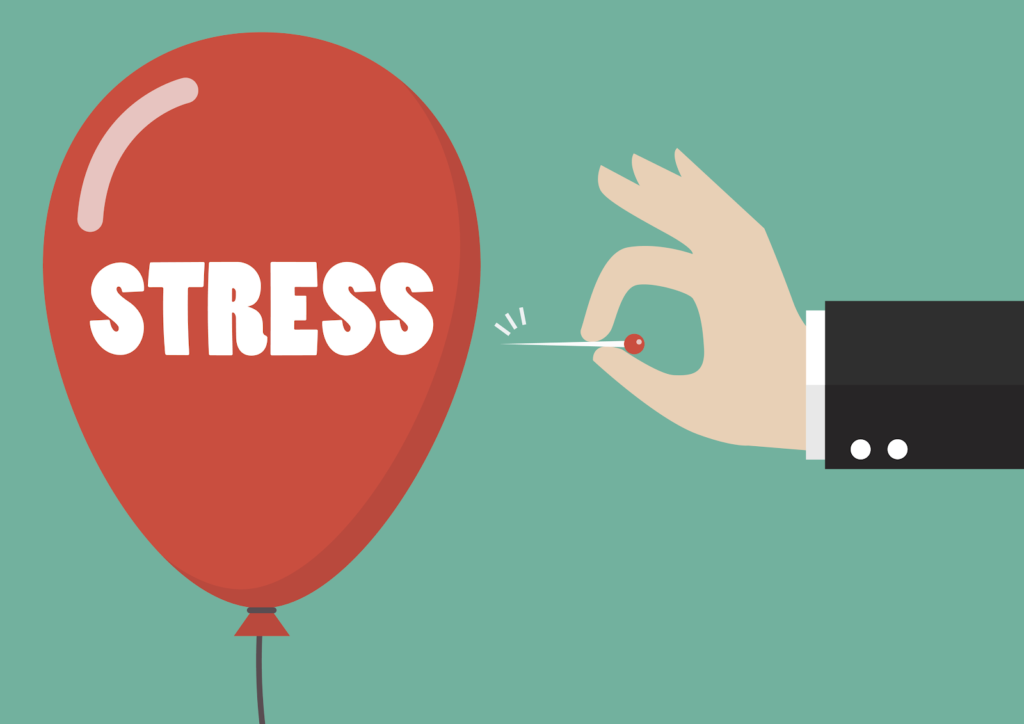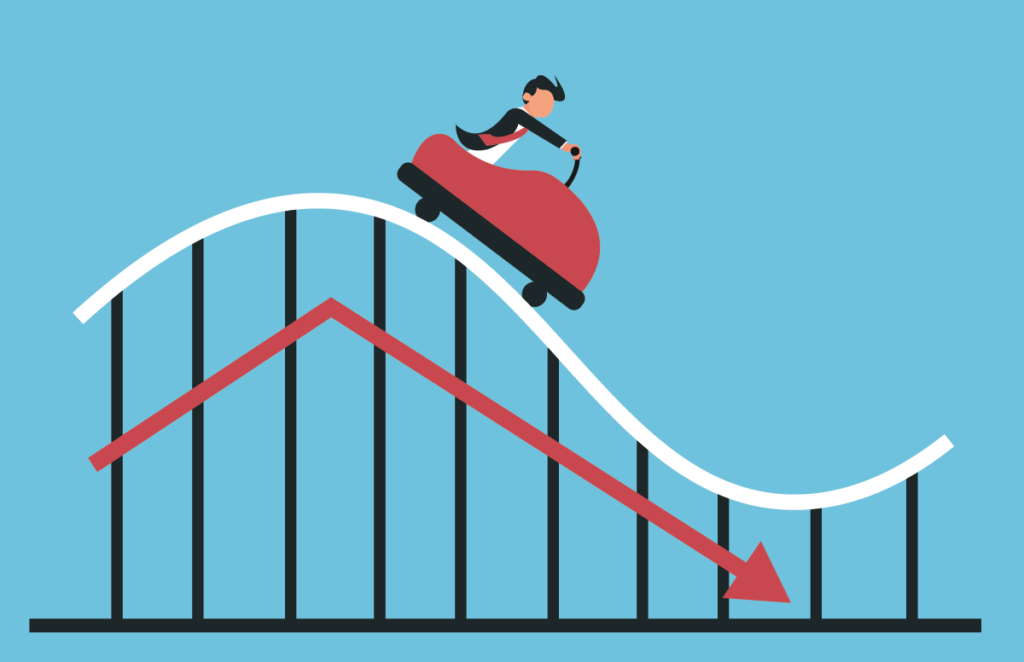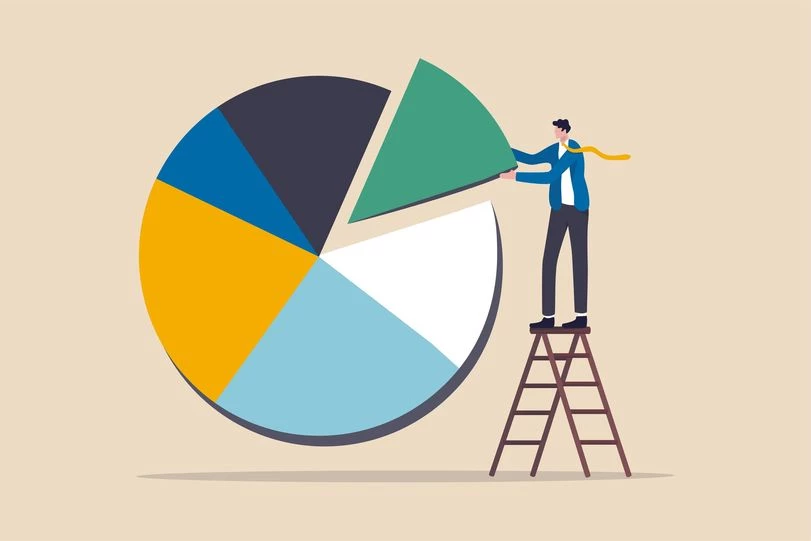5 ways to reduce Stock Market Addiction
0. What is this post about?
Stock market is addictive. The emotions linked to seeing the stock price go up and down are incomparable. Gaining a small amount in a day makes you feel like a winner. Losing a small amount in a day makes you dabble longer, and harder in the stock market, hoping to recover the losses. Many people compare the stock market with a casino, and say that stock investment/trading is like gambling – you never know what lady luck has in store for you. Stock market addiction is unhealthy on multiple levels. In this post, I go deeper into understanding the bad side of stock-market addiction, help you evaluate if you are addicted or not, and give you a five ways to avoid stock market addiction. Let’s get started.
1. What is Stock Market Addiction?
Stock Market addiction, in short, means spending more than necessary time tracking stock price movements. An addicted person checks the stock market every hour or so. A slight gain in his investment will make him happy. A slight dip in price, which turns his investment’s returns red, will make him worry. The addicted person will pray for the stock market to move favorably for the stocks he has invested in. This addiction can eat away the entire day of the person. The person will keep on checking notifications for pre-market action (SGX Nifty movement at 8am). After the Stock Market opens at 9am, the person will frantically check the market movement till the trading window opens at 9:15am. And then, throughout the day, the same process repeats. With the advent of technology, the stock market can be tracked within milliseconds, adding to the overall addiction.

1.1 Good vs Bad Addiction
For a person who is learning stock market investment/trading, and spends 4-5 hours every day reading articles on investment strategies, takes courses, does technical analysis using online tools such as screener.in, trendlyne.com etc. – is Good Addiction. In fact, this is not an addiction. This is a way to quench your thirst for knowledge about stock markets. As long as you are spending time studying the market and learning, it is good. The moment learning turns into praying, you risk slipping into the Bad Addiction zone.
Good addiction, as the name suggests, is good. It helps you learn faster from real experience. If you are a new investor, you will need to spend more time studying the stock market and investment styles, as compared to a seasoned investor. It is rightly said, learning on-the-job is better than learning from the book. No matter how qualified you are, you will need to spend time in the stock market to get real-world experience. Even veteran investors such as Warren Buffet, Vijay Kedia, quote that the stock market is a life-long teacher. The moment you think you have learnt it all, the stock market teaches you a thing or two anew.
If you are a full-time trader, or investor, it makes sense to spend upwards of 4 hours a day tracking the stock market. It is part of your full-time work, apart from taking care of other job duties such as meeting clients, replying to emails, and marketing your investment services etc. However, if you are investing/trading to generate passive income, and are spending north of one hour a day tracking the stock market, you might be addicted!
2. Why is Stock-Market Addiction Bad?
Key reasons how stock-market addiction negatively affects you are:
2.1 Eats up your precious time
Time is precious. Time only moves forward. Addiction to the stock market makes you spend more than necessary time tracking stock price movements. This time can be better spent on other productive work, such as your full time job. Spending more quality time on your full-time job, helps you get promoted, or get a salary raise. This will in-turn enable you to invest more in the stock market. Money is made by investing right, and investing more over time. Money is seldom made by anxiously tracking the stock prices every now and then.
Apart from work time, you should have quality personal time as well. Personal development is the best form of investment in yourself. Personal time can even be devoted towards your family. Quality personal time refreshes you, reinforces the personal support system you have, and helps you grow over time.
Do NOT compromise on your quality work-time, and personal time.

2.2 Poor Investment decisions
A calm mind makes better decisions. Tracking stock prices frantically evokes extreme emotions. These emotions lead you to making wrong investment decision, either buy or sell. You might buy a stock whose price is going up, thinking you will ride the momentum and make some extra bucks. Or, you might sell a stock whose price is decreasing, as you may want to limit your losses and exit early. Neither of these decisions, without doing a good fundamental analysis of the company behind the stock, works. Tracking the stock market several times a day makes you think in the short term. You lose out on analyzing the long term future growth of a company, which will eventually drive the stock price up.
As seasoned investor Charlie Munger aptly says, “In the short term, the stock market is a voting machine; in the long term, the stock market is a weighing machine.”
2.3 More Stress
Yes, addiction causes stress, and impacts your mental health. Some people invest all their savings into the stock market, praying for it to double. Even worse, some people take loans to invest. For these people, losing money in the stock market is not an option. Tracking stock prices causes stress, as markets go up and down. This is the inherent nature of the stock market. Looking at the stock market screen, reading news “titles” related to the stocks you have invested in, will not bring real returns for you. Stress creeps into your personal life as well, impacting your behavior and makes you jumpy. Avoid addiction, avoid unnecessary stress.

3. Am I addicted?
Do you want to find out if you are addicted to the stock market? Take the questionnaire below. If your answer is Yes to any one of below questions, you might be addicted. Do note that this questionnaire is only for those, who are NOT full-time traders or investment analysts.
Q1: Do you check the stock market more than twice in a day?
Checking the stock market multiple times in a day is not healthy. Once or twice is still fine, if you want to check the overall stock price movement. A good habit is to only review your stock price movements once a week, and re-balance them once a month. Daily tracking of stock market prices should be avoided.
Q2. Do you itch to get some action in the stock market daily?
Having the urge to take some action in the stock market daily is not a healthy sign. If you do not take action, your day does not feel good. You take a buy or sell decision, even if for just one share of a company. Do you know that each stock’s share sale costs you INR 16/- (except for intra-day trading). Hence, on every share you sell, if you are not making more than INR 16/- in profit, you are actually selling the share for a loss!
Q3. Do you keep changing buy or sell price for a stock, multiple times a day?
If you are changing the buy or sell price of a stock multiple times in a day, you are not following the right style of investing. Buying at a price INR 0.1 cheaper will not give you more gains. Similarly, selling a share at INR 0.1 higher, will not make you rich. The right way is to find a fair valuation price for a company, apply a margin of safety, and then place a limit order (same day expiry order), or a Good Till Trigger (GTT) order (365 day expiry order).
4. How to Avoid Stock-Market Addiction?
In this section, we will try to understand the common causes behind stock market addiction, and find a solution to mitigate the cause. Note that these suggestions can help you limit your addictive urges. These mitigation ideas are meant to act as a starting point. They will enable you to understand the cause of the addictive behavior, and then address them.
4.1 Reduce Stock Market related App Notifications
Cause of Addictive Behavior?
Notifications about news on stocks, stock recommendations from fund houses, and stock price alerts can distract you throughout the day. These notifications can trigger you to act emotionally. An unfavorable news notification can make you sell a stock, expecting the price to go down further, which may not be the right decision.
Example 1: News of ‘RBI slamming INR X crore penalty on Kotak Mahindra Bank’. This is not a big negative news. If a certain regulatory clause is not met, RBI penalizes the respective bank. This does not mean that Kotak Mahindra Bank is a bad stock, or that RBI is hell bent on ruining Kotak Mahindra Bank’s future operations, etc.
Example 2: News of ‘Star investor Rakesh Jhunjhunwala reduces stake in Titan in Q1’. This is not negative news for Titan. If you read the complete article, you will realize that the star investor has reduced a very minor percentage stake in Titan, and with a good reason of reinvesting that money elsewhere.
Example 3: ‘Top losers for the day – Reliance is down 10%, largest single day dip for the company in the last 18 months’. This may trigger you to sell your Reliance shares, thinking the time for making gains from Reliance stock is over. Maybe not so. In all cases, one should do their own fundamental and technical analysis of a company before taking a buy or sell decision.

Solve
Remove notifications from stock news apps, stock recommendations apps, and stock trading apps. You can do this by going to your mobile settings page, manager notifications options, and turn OFF notifications from the apps you select. This will reduce your anxiety during the day, and help you focus better on your day job.
In order to not miss out on news, you can subscribe to the newsletters/blogs offered by these apps. These newsletters consolidate all articles and send you a daily or weekly email. This will help you read a consolidated version of all notifications in one go. Secondly, this helps you with detailed information on the article, and not just focus on the title of the article which is shown in a notification. More often than not, the title of a news article is made spicy to attract more clicks, whereas the information in the article will provide actual details which can differ from the derived meaning of the “spicy” title.
4.2 Put Limit and GTT orders
Cause of Addictive Behavior?
Getting some action daily in the stock market causes this addiction. The joy of buying a share at Re 0.1 lesser than what it was 1 hour back, is not worth it. People track stock prices constantly to buy or sell when there is a small intra-day change in the stock price. Stock market does provide this opportunity, but at what cost – your time. Intra day gains/losses are incomparable to the long term compounded gains one can make from the stock market. One may argue that small drops of water fill the entire pot of water. True, but that tiny drop comes from incremental earnings by investing in a good stock, and holding it for the long term.
Solve
In order to address the itch to get daily action from the stock market, one should use Limit order, or Good Till Triggered (GTT). Limit order on a stock sets a target price at which your buy/sell decision will automatically trigger. Limit order expires at the end of the day. This will remove the urge for tracking stock prices constantly. Another better way is to use GTT order, which has an expiry of 365 days. GTT order is similar to limit order, and gets triggered once the stock price hits the price mentioned in GTT.
The advantage of GTT and Limit order is that it gives you peace of mind – knowing that your stock market order will trigger at the price set by you. However, getting to the Limit Order price, and GTT price requires some work. You will need to find the fair value for the stock price to set this up. One can calculate this fair value price themselves, or by using online stock analysis tools such as trendlyne, tickertape, screener etc.

4.3 Understand, and Accept Volatility
Cause of Addictive Behavior?
When the stock price goes down, it causes panic in the minds of investors. Why is the price going down? Is this company failing? Is the company going to go bankrupt? Will the price go down further and I should exit to limit my losses? Will the price go up now, and I should buy the dip?
Similar emotions are triggered when the stock price goes up? Has this stock run its course? Is the stock at a premium and I should book profits? Is the bull run in this stock just starting, and I should invest more?
These emotions trigger one to take short term action, and keep on tracking stock price movements to course correct multiple times in a day.
Solve
One should understand, and accept volatility as a part of the stock market investment journey. Stock prices go up and down – it is their nature. Investors and traders drive the stock market by making buy and sell decisions. These decisions are driven by their analysis, and level of confidence in the stocks. Emotions, or personal goals such as generating wealth to buy a car can also drive investment decisions. Sometimes, the market is overtaken by euphoria (bull market), and sometimes by over-pessimism (bear market).
Stock market trades happen when a shareholder sells stock at a price at which a buyer is willing to buy. Eventually, stock market buy/sell is a zero sum game, some lose in order for others to gain. Even great company stocks never move up in a linear fashion. Only when you zoom out to look at a 5-10 years stock price trend is when you will find an upward trendline in a stock price movement. Accepting volatility is hard, but necessary. If you are worried by every 5% fall or rise in the stock price, stock market investment is probably not right for you, and you are better off investing in mutual funds.
In summary, Keep calm and accept Volatility!
Good research should go before making an investment decision. Fretting on volatility post investing is not worth your time.

4.4 Create Time for your Stock Portfolio Review
Cause of Addictive Behavior?
Checking your stock portfolio to see the green returns (positive returns) is one of the most satisfying feelings. It makes you happy, confident, even stirs the emotion of winning in your life. Yes, it does that, and more. It makes you addicted. Seeing more green makes you happier, makes you check returns more often, to reinforce the happy feeling. Vice versa is also true, and even worse. Seeing returns in red (negative returns), worries you. Where did you go wrong? Why is the stock tip not working? What should you do now? Should you pay to get premium stock tips? Should you sell and invest in other better stocks? The worry goes on, and so does the frantic checks on your portfolio returns.
Solve
Regularly checking your portfolio, and rebalancing is a good habit. Frantically checking it every hour, is not. The preferred way is to make dedicated time to review your stock portfolio, and take rebalance decisions as needed. You can block time on your calendar during the weekend if you want to review weekly, or the 1st weekend of the month if you prefer to review monthly once.
I would recommend reviewing your portfolio a maximum of once per week, and a minimum of once every quarter. This will help you reduce the anxiety of checking your returns every now and then. Peeking at your net returns once a day is ok. Just make sure it does not go beyond that. Blocking a dedicated time slot on your calendar will also make you think long term. You will know that your rebalance decision is for the next week, month, or quarter. Hence you will do research before deciding on your buy/sell decision. DYOR (Do Your Own Research) is good!

4.5 Build Diversified, yet Concentrated Stock Portfolio
Cause of Addictive Behavior?
Dabbling in a couple of shares of stocks leads to daylong addiction. Buy low, keep tracking price, and sell high. One repeats this throughout the day to earn a small margin each time. This is fine for full time day traders, but not for those who are investing in the stock market to generate passive income. The more stocks you have in your portfolio, the more time you spend tracking each of them daily. The less stocks you have in your portfolio, the more you are impacted by volatility in these stocks. Is there a middle path to find the right balance between holding too many and too little stocks? Yes – there is!
Solve
Become a long term investor. One should build a concentrated stock portfolio of 15-20 stocks. More than that, and you will find it hard to track all the stocks. A diluted portfolio does not increase your returns, rather it may reduce it. On another extreme, one should not have a super concentrated portfolio of less than 10 stocks. Some people even go to the extent of investing all their savings in one stock, betting it all on one company. This is not advisable.
Different industry sectors go up and down at different times. Hence, diversification is important. In 2020-2022, the Banking and FMCG sector did not perform, but the IT sector gave index beating returns. Diversifying across industry sectors cushions you from negative macro economic factors impacting one industry sector, and balances out your portfolio returns. Less overall portfolio volatility leads to less stress, and less frantic tracking of the stock prices/news.

Becoming a long term investor makes you invest in good quality stocks, rather than dabble in a couple of shares of one stock to make daily gains. Long term investing not only gives you peace of mind, it diversifies your risk and reduces unnecessary costs such as equity selling costs etc. Less costs, long term compounding growth, risk diversification – all lead to wealth generation from the stock market.
5. Parting Thoughts
It can happen to anyone. New retail investors, upon getting initial success, can start spending more time in the stock market. Once you have reached a certain level of stock-market knowledge, spending more time tracking stock prices does not give incremental returns. It is important to be aware of the time you spend learning about investment, versus tracking prices and dabbling in shares. Time is the most precious commodity. Use it wisely. The mitigation points mentioned in section 4 above can help one introspect which mitigation way works for them the best. One should avoid both extremes – do not spend too little time learning about the stock market, which can lead you to invest purely based on tips/recommendations. And do not spend too much tracking stock prices, as it will negatively impact your buy/sell decisions.
What measure have you taken to reduce the daily addiction to the stock market? Comment below.
Happy investing !





Good post. I certainly appreciate this website. Continue the good work!
Pingback: The Last Rupee Investment Mindset | Money Market Investment